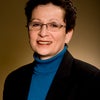
The answer: Madame Marie Curie.
The question: Name a famous woman in engineering or science anywhere in the world.
And she was the only woman engineer or scientist I knew in 1987 when I started researching historical women in engineering and science. Madame Curie received Nobel Prizes in both Chemistry and Physics. Another amazing fact that I did not know when I started learning about she-roes through history, her daughter, Irene Joliot-Curie, also won a Nobel Prize, for the discovery of artificial radioactivity. Let's test your knowledge about other women in chemistry:
_____ 1. Invented Kevlar.
_____ 2. Won a Nobel Prize for discovering how glucose is converted to glycogen, fundamental to developing treatments for diabetes.
_____ 3. Established the first water quality tables in the U.S. and founded the American Association of University Women.
_____ 4. Developed the first effective drug to treat childhood leukemia.
_____ 5. Developed refrigerated railroad cars to safely transport food and invents the egg carton.
A. Mary Engle Pennington
B. Gertrude Elion
C. Gerty Cori
D. Ellen Henrietta Swallow Richards
E. Stephanie Kwolek
I am writing about chemists this week because Stephanie Kwolek, the inventor of Kevlar recently passed away. A woman whose products have saved hundreds of lives, Kwolek originally wanted to pursue a medical career. However, she became enchanted with the chemistry research she was doing at DuPont and spent her career there. Kevlar (invented in 1965) is used in over 200 products ranging from boats and airplanes to the gloves used by lumberjacks and butchers. When Kwolek was inducted into the National Inventor's Hall of Fame, she was escorted to the stage by a policeman whose bulletproof vest -- made with Kevlar - had saved his life. The recipient of many awards including the National Medal of Technology, Kwolek has been inducted into the National Women's Hall of Fame.
The first woman professorial chemist in the U.S., Ellen Henrietta Swallow Richards is credited with opening the scientific fields and scientific education to women. Although admitted to MIT as a "special student" (so the trustees wouldn't have to admit that a woman was enrolled in classes), Richards developed the Women's Laboratory and took over 100,000 samples of Massachusetts water to create the first water quality table. In 1882, Richards was a founder of the organization that today is called the American Association of University Women and is also credited as a founder of the field of home economics. She has been inducted into the National Women's Hall of Fame.
To a significant extent, the fact that Mary Engle Pennington. Referred to in the markets of Philadelphia in the early 1900s as the "Ice Lady," Pennington encouraged the vendors to put fish and perishables on ice. Her patents relate to the safe handling of fish, poultry, eggs, and milk. Pennington invented the egg carton and designed the refrigerated railroad cards that transported food safely across the country. She has been inducted into the National Women's Hall of Fame.
A pioneering biochemist and Nobel Laureate Gerty Cori received the Nobel Prize for Physiology or Medicine in 1947 for the discovery of how muscles process glucose into glycogen. The process is now called the Cori cycle in honor of Gerty Cori and her husband. She was the first American woman to receive a Nobel Prize in the sciences. This discovery paved the way for effective treatments for diabetes Cori later conducted work on enzymes which has allowed identification of defective genes. Cori has been inducted into the National Women's Hall of Fame.
I met Nobel Laureate Gertrude Elion in 1991 at the White House. The Nobel Laureate (1988 Nobel Prize in Physiology or Medicine) was there to receive her National Medal of Science from President George H.W. Bush. Elion had decided to study chemistry after watching her grandfather die painfully from stomach cancer; she was determined to develop drugs to help others so they would not have to suffer as he did. Elion developed the first effective childhood leukemia drug. Later, she enabled organ transplants with the development of an immunosuppressant drug. Her later research has led to treatments for AIDS. Elion has been inducted into the National Inventor's Hall of Fame and the National Women's Hall of Fame.
Learn about more she-roes and celebrate amazing women like these five women in science. These outstanding women are among the more than 850 profiled in the book Her Story: A Timeline of the Women Who Changed America. As a practicing electrical engineer, I know that I benefited from the actions of these trailblazing women.
